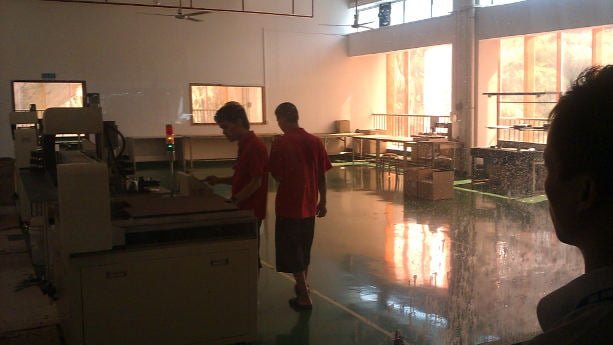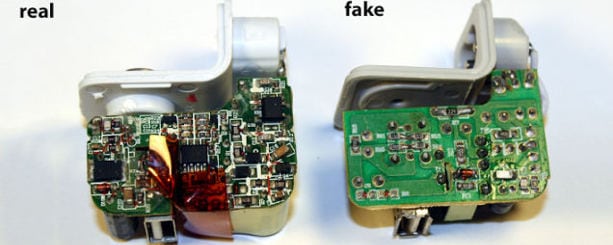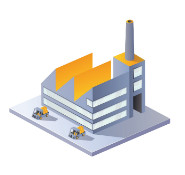Suggestion: Watch the 10 minutes video tutorial before reading this article
About to import electronics from manufacturers in China? In this product guide, I explain what startups must know about the whole electronics importing process:
1. How to find the right Electronics Manufacturers
2. Importing OEM and Private Label Electronics
3. Prototype Development
4. CE Marking, FCC Regulations & other safety standards
5. Electronics Trade Shows
6. Technology Licensing (i.e., Apple MFi, Bluetooth and Android OS)
Electronics Product Development and Customization
Electronics importers have two options: Buy an OEM product that is custom designed from scratch, or import an ODM product, or private label product.
Developing OEM electronics is not for every company, as it requires technical expertise and large funding.
However, Chinese manufacturers don’t offer free product development services. The buyer is always expected to provide all relevant technical specifications, and files, including the following:
- CAD files
- PCB design files
- Source code
- Print files (.ai format)
For many Electronics Startups it makes more sense to buy an ODM product, essentially a factory standard design that not only is branded but also customized to a certain degree. Click here to learn more about ODM products when buying from China.

What you Need to Know Before Selecting an Electronics Manufacturer in China
The electronics industry is highly concentrated in China’s southern Guangdong province, in the cities of Shenzhen, Dongguan, and Zhongshan in particular.
That being said, components are manufactured worldwide, some by domestic manufacturers, with others being imported from suppliers in Japan, Taiwan (ROC), South Korea, Germany, and the United States.
Electronics manufacturers, regardless of product, are not all equals. The industry is crowded with everything from minor traders and agents to large scale manufacturers. The size of the average factory is smaller than what many importers assume.
Many factories don’t consist of much more than two to three assembly lines, staffed by 50 to 100 workers. Electronics assembly is not necessarily rocket science, and most components and materials are purchased from subcontractors.
When you select an electronics manufacturer, regardless of whether you buy ODM or OEM, you must consider the following:

FREE CONSULTATION SESSION
- 1. How to create product designs & specifications
- 2. Finding suppliers in China, Vietnam & India
- 3. Shipping & import taxes (US, EU, UK & Australia)
- All attendees can ask questions!
- Best Regards, Ivan Malloci
1. Regulatory Compliance
Compliance with applicable safety standards and directives (e.g. FCC Part 15, RoHS and the EMC Directive) is mandatory when importing electronics to the United States, the EU, Canada, Australia and many other countries.
Most Chinese manufacturers cannot ensure compliance, and therefore previous compliance (e.g. Test reports and technical documents) must be verified before selection.
Making compliant products’ requires more costly components (e.g. RoHS compliant ICs and solder), as compared to electronics not made according to comply with strict safety standards and regulations.
There are also voluntary standards, for example, ETL and UL standards. If you’re based in the United States, I suggest that you try to find a supplier that is already UL listed.
2. Production Capabilities
Some suppliers put together assembled PCBs, casing and other components, purchased directly from subcontractors.
Other manufacturers, however, design and assemble PCBs in house, and some may even refine and cut fabrics, TPU, silicon and other materials used in their products.
Working with the latter type of electronics manufacturer makes it easier to develop new products, and customize existing designs. It also makes it easier to resolve design and functional flaws, which is to be expected when developing new products.
3. Quality Management System (QMS)
A QMS (e.g. ISO 9001:2008) is applied to track quality and prevent quality issues throughout the production process. Quality issues can multiply rapidly, and ruin an entire batch of products unless testing is carried out continuously on the assembly lines.
Most electronics manufacturers have at least one or two testing stations, but few comply with comprehensive Quality Management Systems, such as ISO 9001:2008.
Spending more time on quality management comes at a cost, therefore resulting in such suppliers quoting slightly higher prices. Yet, a reduced defect rate often makes it a wise investment.

Electrical Safety Standards & Labelling Requirements
As already mentioned, previous compliance is critical when selecting an electronics manufacturer. Most suppliers lack the technical capability, knowledge, experience and subcontractor network required to ensure compliance with European, American and Australian safety standards and regulations.
The ‘compliance rate’ differs between industries, but less than 5% of the suppliers can ensure compliance, in most industries. Suppliers with the capability and experience to ensure said compliance often share the following characteristics:
1. Main markets include the European Union and/or the United States: Many suppliers focus on the domestic Chinese market, while others are geared towards Asia, therefore not giving them an incentive to comply.
2. High registered capital: Suppliers with a large registered capital (> RMB 5,000,000) tend to be more sophisticated than smaller suppliers. Machinery and equipment may also be included in the registered capital.
3. Price: Ensuring compliance with electrical safety standards and substance regulations comes at a cost. Electromagnetic shielding, RoHS compliant components and lead free paint cost more money to procure.
When importing electronics from China, you may need to ensure compliance with more than just one regulation or directive. There are primarily four types of regulations to consider:
- Electrical safety standards/directives
- EMC standards / directives
- Communication regulations (e.g. RED or FCC Part 15)
- Substance regulations (applies to plastic cases and components)
- Labeling requirements (e.g. CE, WEEE and ‘Made in China’ markings)
Different regulations apply depending on the market, product, usage, and function. The table below lists some common regulations that US and EU importers must keep track of:
| Market | Regulation / Directive | Description |
|---|---|---|
| US | FCC Part 15 (Intentional Radiators) | An intentional radiator is a device that is intended to emit radio energy. This scope includes any WiFi and Bluetooth Enabled device. |
| US | FCC Part 15 (Unintentional Radiators) | An unintentional radiator is, in 47 CFR 15.3, defined as any electrical device “operating at over 9000 pulses per second (9 kHz) and using digital techniques”. This definition includes most consumer electronics containing a chip, such as USB enabled devices, even if not equipped with a WiFi or Bluetooth transmitter. |
| US | UL | Underwriter laboratories developes safety standards for eletronics and components. While UL compliance is not required by law, most retailers will not buy products that are not UL certified/listed. |
| US | CA Prop 65 | California Proposition 65 regulates more than 800 substances in most consumer goods. While CA Prop 65 only applies in California, you must ensure compliance if you are either based on or selling to consumers in, the state. |
| EU | Low Voltage Directive | The LVD applies to electronics, and components, with an input, or output, ranging between 50 to 1000 volts AC, and 75 to 1500 volts DC. |
| EU | EMC Directive | The EMC Directive is applicable to fixed electronic appliances. The purpose is to ensure that electrical equipment doesn’t interfere with other electronics, and signals, in its proximity. |
| EU | RED | The RED (Radio Equipment Directive) is applicable to radio and telecommunication equipment. The scope of regulations includes both final products and individual components. Therefore, products with radio, WiFi and Bluetooth transmitters and receivers are required to comply. |
| EU | RoHS | The RoHS directive restricts the amounts of certain substances in electronics, including lead, cadmium, and mercury. |
| EU | REACH | REACH regulates substances, including lead and cadmium, in all products sold in the EU. |
Labeling requirements, for example, FCC marking in the United States, RCM in Australia and the CE mark in the European Union, signal compliance with all applicable regulations.
As such, importers must first confirm which regulations apply, and then verify whether the manufacturer can prove previous compliance.
Electronics Compliance Testing
Third party lab testing is the only way to verify that a product is compliant with all applicable safety standards and other regulations. While lab testing is in most cases, not a legal requirement, you are still liable in case anything goes wrong – for example, if your product injures the user or cause a fire.
Such incidents are very common with non-compliant and unsafe electronics. Lab testing electronics can also be costly. You should budget at least US$1500 per SKU for lab testing. This figure can increase significantly if the product is more complex.
List of Electronics Testing Companies
- CMA Testing and Certification Laboratories
- Intertek
- SGS
- TUV
- Bureau Veritas
Electronics safety risks
Neglecting electrical safety regulations, or just hoping for the best, is not an option. Importing non-compliant products is illegal and for good reasons. Cheap and substandard, therefore non-compliant, electronics can cause electrical and fire hazards.
Take a look at the photo below, which illustrates the difference between an authentic apple charger, and a counterfeit. The latter lacks components, essential to ensure that the charger doesn’t overload and explode.

Photo credit: Gizmodo.com
Compliance and safety come at a cost and is not a matter of negotiation. Some importers assume that the manufacturer is ultimately held responsible, but that is not the case.
It’s up to you to ensure that the items are compliant, and provide the necessary documentation (e.g. Declaration of Conformity and Test Reports) to prove so.
Technology Licensing
If you’re about to import electronic products from China, chances are it will use Bluetooth, Android OS or perhaps the Apple lighting connector.
These technologies are not always ‘open source’ and free for anyone to use. Instead, you may need to pay a license fee, on a per product (SKU) or manufactured unit.
Android OS: Free License
Apple Device Compatibility: MFi License required for both the Importer and the Manufacturer. Additional license costs for each produced unit.
Bluetooth: License fee starting from around US$2500 per product line
Don’t expect to get answers from an electronics manufacturer. They are not license experts.
Before you import electronics from China, you need to do your research and find out which licenses you need before placing the product on the market.
Quality Control
Quality checks prior to shipment is an absolute must when importing electronics from China. Given the complex nature of electronics, it’s essential that you create a comprehensive quality checklist covering functionality testing and component checks.
- Full functionality tests
- Basic functionality tests
- Fatigue test (buttons, ports)
- Component check
- Charging test
- Product appearance
- Label check
- Drop test
- Water resistance test
- Dimensions
- Packaging content check
Keep in mind that there’s no simple or straightforward way to return defective products to the factory. As such, quality checks are essential for every order.
Warranty and returns
Some electronics factories claim to offer product warranties. However, most suppliers tend to find any excuse imaginable to ensure that they will not need to compensate even the most obvious quality problem.
Even if they do honor their “warranty terms”, don’t expect them to cover shipping costs to and from China. As such, you should not rely on the suppliers claim to offer a warranty in any meaningful way.
Electronics Trade Fairs in Hong Kong and Mainland China
Canton Fair (Phase 1) (Guangzhou)
- Consumer Electronics
- Electronic and Electrical Products
- Computer and Communication Products
- Household Electrical Appliances
- Lighting Equipment
HKTDC Electronics Fair (Hong Kong)
- Wearables
- 3D printing
- IoT
- Drones & Unmanned tech
- Audio-visual products
- Branded electronics
- Eco-friendly products
- Packaging & design
- Navigation systems
electronicAsia (Hong Kong)
- Computer & Peripherals
- Hardware
- Electronic / Electrical Component & Accessories
- Battery
- Solar Products
- Audio Equipment
- Machinery
- Video Game Accessories
Globalsources Electronics Fair (Hong Kong)
- Consumer electronics & accessories
- Electronics
- Telecom Products
- Electronic Games
- Audio & Video Products
- Mobile intelligent devices & accessories
- Mobile intelligent terminals
- Computer Accessories
- Accessories for Apple






















I saw this very good post of yours and I liked it very much, I do not know how to praise it, I would just like to say that this post is one of the posts that I love and I am very happy to see these posts.
Hi,
I want to start my own electronic business in India. So I am planning to import the electronics product from China. What is the process to import the product from China.Is there any way to find and contact a reliable manufacturer?
Hi Vipin,
I suggest you watch our free webinar: http://www.chinaimportal.com/webinar-a
It explains how to find the right supplier, order samples and, well, the entire process actually.
Hi,
I want to go into importation of electronics e.g air conditioner but I need a manufacturing company that can fine-tune(modify) it from the normal A/C that we have.
How can I get in touch with the company that can manufacture the products for me in accordance with my idea?
What can I do to ensure that my idea is been protected after my discussion with them
Hello Henry,
What kind of changes do you plan to make? Hardware, software or perhaps both?
i have a question: how do i get product manufactured by chinese company with my own trade mark? can you help me please
Not sure I understand your question. The supplier has nothing to do with the trademark registration process.
Hello,
I just have one question. Can you import electronics with EU plug to UK FBA warehouse?
Thanks
Hi Mike,
I am not sure to be honest. I would assume that Amazon UK requires that you have UK plugs. If not, you can still count on getting bad reviews.
Chinese manufacturer sometimes mentioned guarantee or warenty of one or two years In case of various electronics. how do they provide his service? what is thehe procedure? Here who bear the cost of transportation? plz clarify in detail. thanks in advance…
Hi Anik,
At best they send spare parts, or offer “free repair”, as long as you pay for the return shipment. However, it’s not a warranty in its true sense.